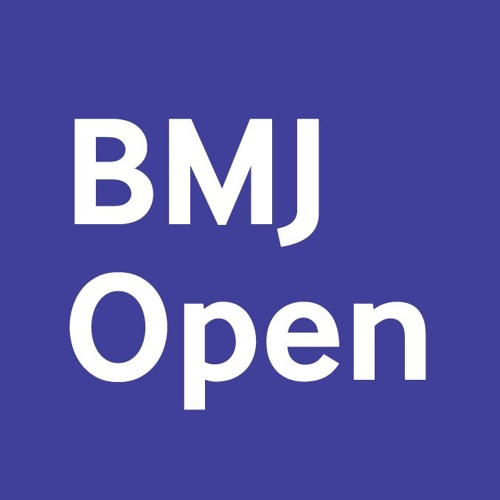 “Autism spectrum disorder (ASD) is a high cost neurodevelopmental condition; and there are currently no effective pharmacological treatments for its core symptoms. This has led some families and researchers to trial alternative remedies – including the non-intoxicating Cannabis sativa-derived compound cannabidivarin (CBDV). However, how CBDV affects the human brain is unknown.
“Autism spectrum disorder (ASD) is a high cost neurodevelopmental condition; and there are currently no effective pharmacological treatments for its core symptoms. This has led some families and researchers to trial alternative remedies – including the non-intoxicating Cannabis sativa-derived compound cannabidivarin (CBDV). However, how CBDV affects the human brain is unknown.
Previous (pre)clinical evidence suggests that CBDV may modulate brain excitatory-inhibitory systems, which are implicated in ASD. Hence, our main aim was to test, for the first time, if CBDV shifts glutamate and/or GABA metabolites – markers of the brain’s primary excitatory and inhibitory system – in both the ‘typical’ and autistic brain.
Our subsidiary aim was to determine whether, within ASD, brain responsivity to CBDV challenge is related to baseline biological phenotype. We tested this using a repeated-measures, double-blind, randomized-order, cross-over design.
We used magnetic resonance spectroscopy (MRS) to compare glutamate (Glx = glutamate + glutamine) and GABA + (GABA + macromolecules) levels following placebo (baseline) and 600 mg CBDV in 34 healthy men with (n = 17) and without (n = 17) ASD. Data acquisition from regions previously reliably linked to ASD (dorsomedial prefrontal cortex, DMPFC; left basal ganglia, BG) commenced 2 h (peak plasma levels) after placebo/CBDV administration. Where CBDV significantly shifted metabolite levels, we examined the relationship of this change with baseline metabolite levels. Test sessions were at least 13 days apart to ensure CBDV wash-out. CBDV significantly increased Glx in the BG of both groups. However, this impact was not uniform across individuals. In the ASD group, and not in the typically developing controls, the ‘shift’ in Glx correlated negatively with baseline Glx concentration. In contrast, CBDV had no significant impact on Glx in the DMPFC, or on GABA+ in either voxel in either group.
Our findings suggest that, as measured by MRS, CBDV modulates the glutamate-GABA system in the BG but not in frontal regions. Moreover, there is individual variation in response depending on baseline biochemistry. Future studies should examine the effect of CBDV on behaviour and if the response to an acute dose of CBDV could predict a potential clinical treatment response in ASD.”
https://www.ncbi.nlm.nih.gov/pubmed/31748505
“Here we report that CBDV can ‘shift’ subcortical levels of the brain’s primary excitatory metabolite glutamate (measured as Glx) both in the neurotypical and autistic brain; but that there may be significant response variability in ASD. These findings add to our understanding of the effects of CBDV in the adult human brain. Nonetheless, future studies will need to explore (i) the mechanisms of action of CBDV; (ii) the impact of CBDV on (ASD-related) cognition and behaviour; (iii) if single-dose responsivity could facilitate the identification of pharmacologically homogeneous sub-groups; and (iv) if acute CBDV effects are indicative of the impact of long-term treatment in ASD.”
https://www.nature.com/articles/s41398-019-0654-8
 “The monocyclic 1,4-benzoquinone, HU-331, the direct oxidation product of cannabidiol, inhibits the catalytic activity of topoisomerase II but without inducing DNA strand breaks or generating free radicals, and unlike many fused-ring quinones exhibits minimal cardiotoxicity. Thus, monocyclic quinones have potential as anticancer agents, and investigation of the structural origins of their biological activity is warranted. New syntheses of cannabidiol and (±)-HU-331 are here reported. Integrated synthetic protocols afforded a wide range of polysubstituted resorcinol derivatives; many of the corresponding novel 2-hydroxy-1,4-benzoquinone derivatives are potent inhibitors of the catalytic activity of topoisomerase II, some more so than HU-331, whose monoterpene unit replaced by a 3-cycloalkyl unit conferred increased antiproliferative properties in cell lines with IC50 values extending below 1 mM, and greater stability in solution than HU-331. The principal pharmacophore of quinones related to HU-331 was identified. Selected monocyclic quinones show potential for the development of new anticancer agents.”
“The monocyclic 1,4-benzoquinone, HU-331, the direct oxidation product of cannabidiol, inhibits the catalytic activity of topoisomerase II but without inducing DNA strand breaks or generating free radicals, and unlike many fused-ring quinones exhibits minimal cardiotoxicity. Thus, monocyclic quinones have potential as anticancer agents, and investigation of the structural origins of their biological activity is warranted. New syntheses of cannabidiol and (±)-HU-331 are here reported. Integrated synthetic protocols afforded a wide range of polysubstituted resorcinol derivatives; many of the corresponding novel 2-hydroxy-1,4-benzoquinone derivatives are potent inhibitors of the catalytic activity of topoisomerase II, some more so than HU-331, whose monoterpene unit replaced by a 3-cycloalkyl unit conferred increased antiproliferative properties in cell lines with IC50 values extending below 1 mM, and greater stability in solution than HU-331. The principal pharmacophore of quinones related to HU-331 was identified. Selected monocyclic quinones show potential for the development of new anticancer agents.”
 “Drug-resistant seizures are life-threatening and contribute to sustained hospitalization.
“Drug-resistant seizures are life-threatening and contribute to sustained hospitalization. “The study aims to investigate: (1) the prevalence of cannabis among epileptic patients seen at Mansoura University Hospital, (2) serum levels and gene expression of cytokines in epilepsy patients and the controls. and (3) the possibility that cannabis use affects the cytokine levels in epilepsy patients, triggering its future use in treatment.
“The study aims to investigate: (1) the prevalence of cannabis among epileptic patients seen at Mansoura University Hospital, (2) serum levels and gene expression of cytokines in epilepsy patients and the controls. and (3) the possibility that cannabis use affects the cytokine levels in epilepsy patients, triggering its future use in treatment. “Autism spectrum disorder (ASD) is a high cost neurodevelopmental condition; and there are currently no effective pharmacological treatments for its core symptoms. This has led some families and researchers to trial alternative remedies – including the non-intoxicating
“Autism spectrum disorder (ASD) is a high cost neurodevelopmental condition; and there are currently no effective pharmacological treatments for its core symptoms. This has led some families and researchers to trial alternative remedies – including the non-intoxicating  “Neuroinflammation is associated with many neurodegenerative diseases, including amyotrophic lateral sclerosis (ALS). In this study, we investigate the anti-inflammatory, anti-oxidant, and anti-apoptotic properties of two non-psychoactive phytocannabinoids, cannabigerol (CBG) and
“Neuroinflammation is associated with many neurodegenerative diseases, including amyotrophic lateral sclerosis (ALS). In this study, we investigate the anti-inflammatory, anti-oxidant, and anti-apoptotic properties of two non-psychoactive phytocannabinoids, cannabigerol (CBG) and  “This review is to summarize most recent evidence published in the last 18 months on medical and recreational use of cannabis and
“This review is to summarize most recent evidence published in the last 18 months on medical and recreational use of cannabis and  “Ecological research suggests that increased access to
“Ecological research suggests that increased access to  “The protective effect of
“The protective effect of  “Amyotrophic lateral sclerosis (ALS) is a neurodegenerative disorder with no known cure and with an average life expectancy of 3-5 years post diagnosis.
“Amyotrophic lateral sclerosis (ALS) is a neurodegenerative disorder with no known cure and with an average life expectancy of 3-5 years post diagnosis.